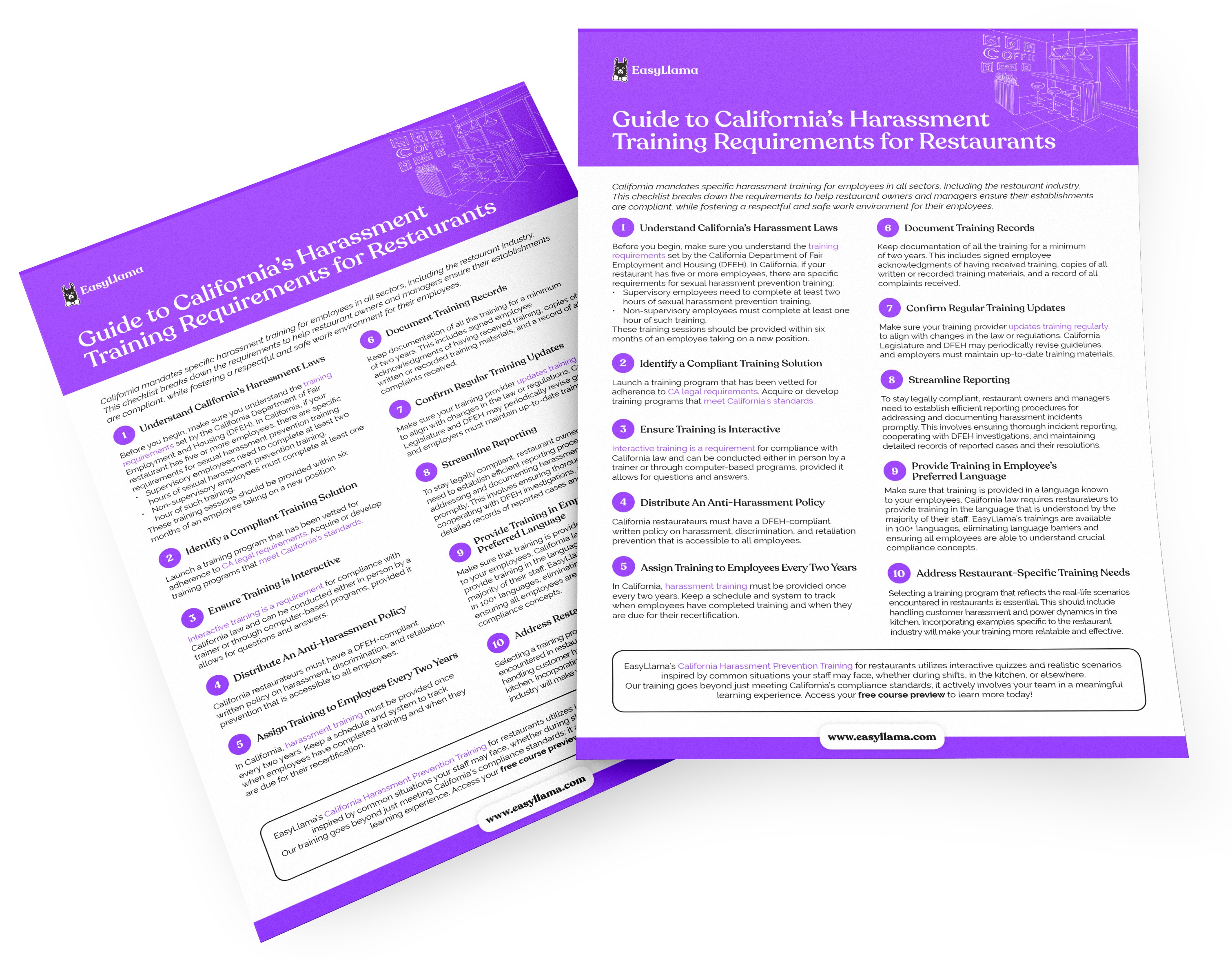Guide to California's Harassment Training Requirements for Restaurants
Comprehensive guide for California restaurant industry: Navigate harassment training requirements, ensure legal compliance, foster respectful workplace.

Get Your Organization Trained Today
TRUSTED BY OVER 8,000 AMAZING COMPANIES
closer look
What's Inside
- 1
Understand California’s Harassment Laws
Make sure you are aware of the training standards established by the California Department of Fair Employment and Housing (DFEH) before you start.
- 2
Identify a Compliant Training Solution
Introduce a training course that has been verified to comply with California law.
- 3
Ensure Training is Interactive
According to California law, interactive training must be completed. It can be delivered online as long as it allows for question and answers.
- 4
Distribute An Anti-Harassment Policy
Restaurants in California are required to have a documented policy on harassment, discrimination, and retaliation prevention that complies with DFEH regulations and is available to all workers.
- 5
Assign Training to Employees Every Two Years
Harassment training has to be given in California once every two years.
- 6
Document Training Records
Maintain all training records for a minimum of two years.
- 7
Confirm Regular Training Updates
As laws and regulations change, make sure your training provider keeps the training up to date on a regular basis.
- 8
Provide Training in Employee’s Preferred Language
Make sure that training is provided in a language known to the employees. California law requires restaurateurs to provide training in the language that is understood by the majority of their staff.
- 9
Address Industry-Specific Training Needs
Selecting a training program that reflects the real-life scenarios encountered in restaurants is essential. Incorporating examples specific to the restaurant industry will make your training relatable and effective.